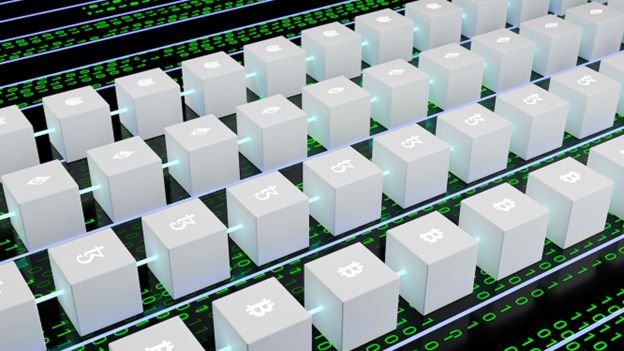
The explosive growth of blockchain technology does not seem to be declining. Over the past few years, it has been shown that things like increased service costs, double spending, net fraud, recovering corrupted files, and other improbable things are not true. However, thanks to blockchain technology, these problems can now be prevented.
Blockchain Technology
A blockchain is a digital database that stores data digitally. Blockchains are known for playing an important role in ensuring a safe and decentralized ledger in digital frameworks like BTC. The advancement of a blockchain is that it creates confidence without the use of a trustworthy mediator and ensures the reliability and protection of the information and data it stores.
One of the primary differences between a blockchain and a traditional database is how information is managed. In a blockchain, data is gathered in blocks, which contain collections of data. The blockchain is a data chain made up of blocks that each has a specific capacity and, when occupied, are sealed and associated with the block that was recently filled. After that newly added block is filled, all new data is collected into a recently established block that will eventually contain all the information that has been added.
When decentralized, this data structure, by definition creates an irrevocable timetable of records. A block becomes a permanent fixture in this timetable when it is filled. When a block is added to the chain, a precise record is assigned to it. A blockchain, as its term suggests, constructs its information into blocks that are tangled together.
The nature of blockchain and cryptocurrencies, in general, is complicated. Thus, assistance from credible brokers of reliable crypto platforms is recommended. There are several linking platforms that can ease your trading journey, such as Bitcoin Profit. The platform offers 24/7 customer support which you can access anytime via the Bitcoin Profit’s contact form.
Benefits of Blockchain Technology
Precise
There will be less user failure and a more precise file of the data because there are far fewer humans involved in the validation system. Even if a system computer made an algorithmic inaccuracy, only one duplicate of the blockchain would be affected. That error would need to be committed by at least 51 percent of the computers in the system for it to be distributed to the entire blockchain.
Lowered Expenses
Blockchain reduces the demand for external confirmation and the expenses that come along with it. For instance, companies that accept card payments must pay a small amount to banks and financial processors because they must handle those purchases. Bitcoin, in contrast, has low processing fees and no centralized system. Customers generally charge a bank to confirm a payment, a notary to verify files, etc.
Decentralization
Every computer on the system upgrades its blockchain to display the latest block whenever it is introduced to the chain. Blockchain makes it harder to alter data by distributing it across a system instead of storing it in a centralized system. A cybercriminal would only compromise a single copy of the data instead of the core system if the hack were to occur.
Speedy Transfers
For instance, if you try to make a check deposit on Friday night, it might not be reflected in your account until Monday morning. This is one feature that is nice about blockchain technology. It is available 24/7, whereas banking firms are typically open during office hours for only 5 days a week. In just a few hours, transactions can be considered safe and can be completed within minutes. This is incredibly valuable for international transactions, which frequently take a long time because of time differences and the need for all entities to verify transactions.
Confidentiality
There is a general stereotype that blockchain technologies are anonymous when in reality, they are only confidential. Many blockchain technologies are public datasets, allowing anyone with online access to see a list of the system’s transactions. Users can access transaction history but cannot access data about the users who are participating in those exchanges.
Even though a transaction is linked to a person’s name, it does not reveal any personal details about that person, even if they have made a purchase that involves verification. A user’s unique code, known as a public key, is stored in the blockchain and not their private details.
Security and Protection
Blockchain technology is in charge of verifying a transaction’s validity after it has been documented. On the blockchain, numerous servers race to ensure that the purchase info is accurate. Once the system has verified the transaction, it is added to the blockchain block. Each block on the blockchain has its own unique code, and the code of a block modifies when the data in that block is updated.
Transparency
There is no greater authority regarding who governs BTC‘s unique code or how it is updated because most blockchains use accessible systems, meaning that anyone can perceive its code. This enables auditors to check the security of digital currencies. Additionally, it also means that anyone can propose system upgrades or modifications because Bitcoin can be upgraded if the majority of system users agree that the upgrade is necessary.
Conclusion
Digital currencies are a part of the reason why blockchain is now starting to get recognition. Every investor is talking about blockchain, which aims to eliminate third parties and improve the efficiency, accuracy, security, and transparency of transactions. The technology already has a variety of beneficial applications that are being tested out and put into practice.
The basis for this trust is blockchain, which offers additional benefits beyond trust issues, including decreased expenses from enhanced performance and reliability. Blockchain actually decreases operating costs and the demand for third parties to authenticate purchases by reducing errors.





